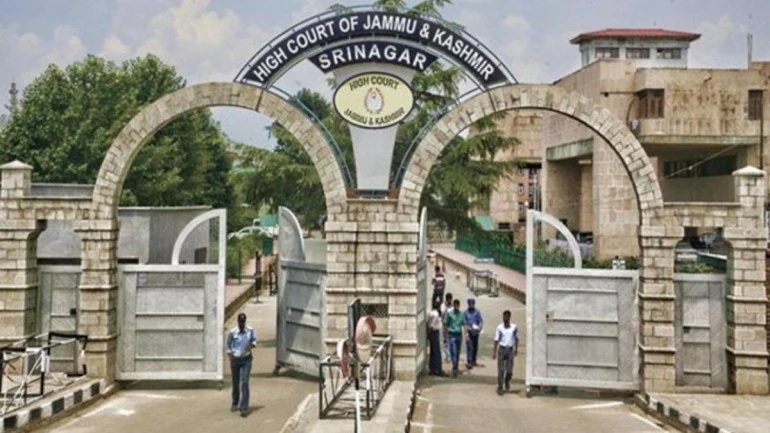
By Sama Zehra
WHAT good is a system if it stumbles while serving its purpose?
The trust of people with the justice system has reached rock-bottom, the reason being delay in Justice, the growing influx of undertrials, and the prejudiced and seemingly lax behavior of Judges. There is a scarcity of human and technological resources, a lack of proper infrastructure, and most importantly, a dire need to fill vacant positions.
The government and the Judiciary often play a blame game to veil the flaws and lacunas of the judicial system, thereby, allowing matters of concern to grow gently in dark. “The court has often ruled on complex issues such as the ban on the use of crypto-currency and the linkage of Aadhaar to SIM cards and bank accounts on grounds of national security and money laundering, respectively, and even struck them down. In these cases, instead of choosing between either refraining altogether or substituting the decision of the government, the court assessed the quality of the government’s justifications,” argues Jahnavi Sindhu, a Delhi-based advocate.
While there’s a need for a judicial review, Sindhu says, two arguments have been advanced to justify the courtroom deferential approach and both are unsustainable. “First, that such decisions are not based on objective factors that can be presented to and assessed by a judicial body, but are based on the “subjective satisfaction” of officers who possess exclusive knowledge of the situation on the ground. And the second, and closely related, argument offered is that the court does not have the competence to review matters of national security. However, this argument taken to its logical conclusion would imply that the Court cannot rule on any complex issue irrespective of its impact on fundamental rights.”
Since the Covid-induced lockdown, the pendency of cases has risen precipitously, making the institution of Justice slow and sluggish. Statistics submitted by the National Judicial Data Grid states that the Judiciary has to grapple with a massive backlog of 45 million cases. On analyzing the data, it was found that around a 5.75 million cases are pending before the HC’s and 39 million before District courts. Even though the rate of case disposition has grown over years, pendency still remains, owing to newer cases out-spacing the disposed ones.
The legal maxim “Justice delayed is justice denied” forms one of the bedrocks of the Judiciary. Unfortunately, the maxim exists solely as an essential literary piece, with limited practical applicability. Pendency of cases and non-availability of staff has worsened yet another malady called the “undertrials”. An increase in case backlog over years has led to a sudden upsurge in the number of undertrials. The accused persons awaiting trial are more than double the number of convicts present in jail. According to the NCRB report, 70% of prisoners in India are undertrials.
Sometimes, the undertrials serve more time in jail than they would have received if found guilty. Accused persons outnumber the guilty, undertrial incarcerations exceed the guilty punishments, innocent serve more time in jail than known criminals, where is our Justice system heading towards?
The disappointing data of undertrial and case pendency often shapes a negative public opinion towards Judges, who are blamed for not deciding cases expeditiously and for their sloppy behavior. However, the pendency of cases as an issue which has brought groan and crumble to the judiciary, has Judges playing a minor part in it.
With 17 judges per million, the ratio of judges to the population is woefully inadequate. Therefore, handling the daunting case backlog becomes increasingly difficult and stressful for Judges. Reports state that more than 400 positions of Judges are vacant across various High courts while the subordinate judiciary has 5,000 vacant positions. Many analysts have suggested an increase in the appointment of Judges as a remedy to the long-standing problem. However, no step has been taken in that direction.
Filling up the Judicial vacancies has proved to be an uphill task in India, given the procedural wrangles and the prejudiced and dithered nature of their nomination. Numerous nominations have been rejected due to gender bias or due to influential support given to some judges. In 2017 Saurabh Kripal was unanimously nominated as a permanent judge of Delhi High Court. However, the Centre failed to clear him as a Judge due to his sexual orientation. Moreover, with the government showing its real colors through increased executive interference into the judiciary, lawyers have become quite reluctant to accept Judgeship.
Additionally, it is a glaring reality that subordinate courts receive the least attention. Despite being the primary interface of people with the Judiciary and burdened with the highest number of litigations, subordinate judiciary has received minimal infrastructural and technological developments. Lack of infrastructure serves as an impediment to the effective functioning of courts. These impediments not only act as stumbling blocks in the procedure of delivering justice but also add to the humongous number of pending cases.
The picture of Jammu & Kashmir judiciary is not much different. It is as crumbled and burdened as the ones at top of the pyramid. According to NJDG data, 147000 cases have clogged the high court and subordinate courts of Kashmir. Lack of infrastructure and facilities has added fuel to the fire. Rampant internet shutdowns, curfews, and lockdowns have kept the courts from working at a standard pace. With courts going virtual since March 2020, delivering justice has become a herculean task for the members of the legal fraternity.
Post abrogation of article 370, there has been a massive increase in habeas corpus petitions filed before the courts. Within a week, after 5th August, more than 250 petitions of Habeas corpus challenging detention under PSA were filed. Sadly, it has been seen that these cases are needlessly dragged on for years.
Pointless postponement of cases has worsened the state of undertrial incarceration in the valley. According to the data furnished by the prison department Jammu, 90% of inmates in jails are undertrials.
The transfer policy followed by the Indian Justice Department is partly responsible for the chaotic situation in Kashmir. According to the current policy, judges have to at least work once in a far-flung area. These courts are usually far behind the backlog number and thus negligible cases are to be heard. This policy has two loopholes. Firstly, judges who have proven their worth and somewhat cleared the backlog, are forced into areas with a little or negligible amount of work. For instance, the total number of pending cases in Anantnag Court is around 1000, whereas the court in Karna has less than 100 pending cases and Kargil has 10-15 cases. This transfer policy sometimes hits a judge when some cases are at the point of closure, consequently causing unnecessary delays as the next judge has to repeat the whole procedure once again. Sending a meritorious judge to courts with negligible amount of work causes wastage of public and court time.
Moreover, the ratio of judges to the population is incongruous. The two-tier procedure for the appointment of judges is lengthy and slow. According to the research conducted by Vidhi Centre, J&K HC could not complete the cycle of recruitment within the stipulated time of 153days rather, 742 days were taken. Given the problems stated above, it would not be erroneous to say that the Judges in Kashmir are comparatively under greater burden than judges from the rest of India.
Hence, it is quite clear that the Judiciary is compressed under the heavy load of cases and problems. J. Katju astutely summed this up, when he said, “about 33 million cases are pending in the Indian courts today, and it is estimated that if no fresh case is filed, it will take about 360 years to clear the backlog”. We cannot wait for 360 or more years to clear the case pendency. It is high time to introduce immediate and appropriate remedies to counter this problem.
Reforms must start from the bottom of the pyramid; subordinate judiciary should be strengthened by appointing more judges and filling the vacancies. District courts across the nation are plagued with defective infrastructure and poor working conditions, the need for improvement has grown considerably drastic, given the digital expectations raised by the higher judiciary. Strengthening the lower courts also entails providing administrative and technical assistance, as well as opportunities for advancement, and growth. With growing awareness and education, new techniques to hear cases and serve justice have been introduced. In the USA barely 7% of cases are decided by the courts and the majority of cases are heard through ADR mechanisms, thereby, shifting and distributing the caseload. The mechanism exists in India as well, however, people are ignorant about the presence of these institutions.
An enormous load of pendency has weakened the judiciary and it makes a person skeptical about the justice system as a whole. However, this skepticism has not weakened public faith in judiciary. “Judiciary has no influence over either the sword or the purse” however, it has enormous backing of public faith and confidence. This firm relationship should be kept intact by introducing reforms whenever necessary. It goes without saying that the judges have held the judiciary strongly and have managed to prevent a crisis scenario. However, if necessary reforms and amendments are not implemented, it will be difficult to predict how long judges will be able to work against these odds.
In this increasingly influence-based world, the judiciary is the best hope of citizens against dogmatist leaders, arbitrary use of power, and repression. The members of legal fraternity have a heavy load of justice delivery on them — they are the torchbearers of justice. This pious position should be protected and should not be jeopardized at any cost.
Views expressed in the article are the author’s own and do not necessarily represent the editorial stance of Kashmir Observer
- The author can be reached at [email protected]
Follow this link to join our WhatsApp group: Join Now
Be Part of Quality Journalism |
Quality journalism takes a lot of time, money and hard work to produce and despite all the hardships we still do it. Our reporters and editors are working overtime in Kashmir and beyond to cover what you care about, break big stories, and expose injustices that can change lives. Today more people are reading Kashmir Observer than ever, but only a handful are paying while advertising revenues are falling fast. |
| ACT NOW |
| MONTHLY | Rs 100 | |
| YEARLY | Rs 1000 | |
| LIFETIME | Rs 10000 | |










